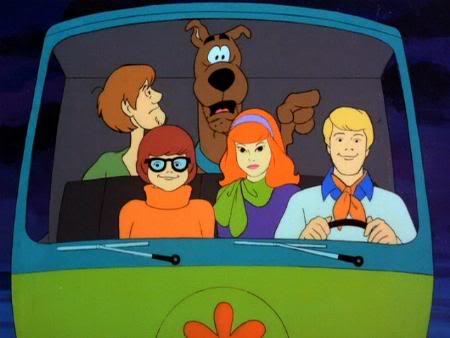The American way of expressing distances by drive time - what does that include?
Context.
“was on the road for 10 hours” includes stops.
“It’s a straight 10 hour drive to Boston” does not include stops.
I never realized how different people take this. For me it’s a definite no. A 10 hour drive is how long it takes without breaks, because it makes no sense to have it included, since everyone’s breaks would vary in length.
Exactly this.
“How long does it take to get to x?”
“Four hours if you don’t stop” or … “it’s a four hour drive”.
If I’m telling someone else how long a drive will be, I tell them the drive time without stops. If I’m telling someone how long a drive is/was for me personally, I’ll include time for stops and note how many times I stopped along the way, for context
Correct, when directly replacing estimated time instead of distance, no stops is customary.
I have no idea how many stops you need or how long they’ll be. That’s on you.
I usually say something like “10 hours, plus stops,” to avoid confusion.
This is the way.
Not if you’re my dad.
gotta make time! (in case there’s confusion, this doesn’t mean make time for breaks, but to get there as quickly as possible)
The Tiny Toons episode where Hampton and Plucky go to what was basically Disney Land is a perfect summary of what road trips with my family were like. lol
Generally you stop every 2-4 hours to stretch your legs, go to the bathroom, get fuel, etc.
So if Google Maps says a drive takes 10 hours, I would factor at least another 1.5 hours for stops and a meal somewhere along the way. So 11.5 hours or so if you don’t stay stopped too long. 0 miles per hour brings the average down quickly.
Nah, if Google maps says it takes 10 hours, then it takes 10 hours with stops unless you’re in the bottom 10% of traffic (such as if you’re a truck towing a trailer).
If you’re like most people going 5 to 10 mph over, then you’ll beat Google maps time by about 15 minutes per 2 hours of drive time without stopping.
Google maps accounts for speeding so it learns and adjusts on the fly. I find it to be pretty accurate with my driving patterns which are definitely nowhere close to tenth percentile.
I drove to the Swedish province Värmland (known for fostering quite a few rally drivers). During the drive to get there, I could see how the ETA ticked down a few minutes every hour. While driving in Värmland, it was the opposite. The ETA ticked up, even while speeding a little.
In my experience for long trips Google Maps doesn’t account for stops, especially if you’re stopping for sit-down meals or traveling with several people. In fairness Google would have no way to gauge that. More people = more delays usually. For a solo driver stopping only for fuel, bathroom, and a few snacks it should be accurate. But just one exit where the place you’re going turns out to be a few miles off the Interstate can easily cost you 30 minutes extra.
As an Australian, not an American, we drive long distances too. We express in km/h and km, not mph and miles. Due to high risks of sleeping on long straight empty roads, rest breaks are taken seriously here. I’d consider a 10 hour drive as door to door including minimal breaks. It would be foolhardy to drive without breaks. However, if I was describing the distance without breaks, I’d say that. If I was taking longer breaks, I’d say it too, for clarity.
My in laws live near the border of the next state. It’s a 6 hour drive without stopping. I’d describe it as a 7 hour drive, door to door. We have done it in 9 hours with stops in playgrounds for the kids. If I was describing that I’d still describe it as a 7 hour drive that we took extra breaks, so it took 9.
Similar to your “door to door with minimal breaks” - as an American, a ten hour drive is the minimum it could take. Yes we should take breaks more seriously
For example, I say it’s a 14 hour drive to my brother’s house. That means I grab breakfast on my way out of town, stop for gas and fast food lunch (perhaps to go), stop for gas and fast food dinner, then get there 14 hours later. If you take more than minimal breaks, it’s up to you to do the math
It usually doesn’t include breaks but it’s also never expected to be used as anything other than an approximation.
Both breaks and driving speed included. I mean “how long it will take me to drive” and it’s usually based on however long it took me last time I drove it.
For example, to visit my childhood home from where I live now is a ten-anna-half hour drive if my father does it, and a nine hour drive if my brother does it.
American here that does long haul drives rather frequently for dog shows…
When I give a time, it’s without breaks. “10 hours to the Fairgrounds” - 10 hours of straight driving with no problems.
I tell folks new to my methodology to anticipate around an hour of variance for every twelve hours, as I typically must stop 2x for gas at least. (My tank holds 400 miles / 12 gallons, and I try not to let it drop below 50 / 1.5 gallons.)
For the dog shows, I’ve got a varying number of dogs with me (8 was my max, 2-4 pretty common) and pottying them takes forever.
Edit for Clarification: I’m content to drive around 14-16 hours straight without stopping to rest. If the trip is longer than that, I do have to pull over to nap.
Which character from Best in Show would you be?
None! I haven’t actually watched it 😅 It does amuse me that it exists, but I spend waaaaay too much time training dogs to actually watch a movie about it.
12 parsecs
Driving at a leisurely 47 attoparsecs per nanocentury
I can do it in under 12
To me, it includes breaks to refuel and use the restroom, and if it’s more than maybe 6 hours, will factor in the time to scarf down a fast-food meal. Also, any time this discussion involves “X hours” it’s undoubtedly being rounded and estimated, and it will involve a hundred different little variables like traffic, road construction, the driver’s tolerance for speeding a bit, etc. Also, don’t forget that it’s common, but not formal, so there’s no single way people are taught, and different contexts will require different levels of accuracy.
It’s crazy how big the variables can be as well. Both my ex and I have family in the Baltimore-Washington-Virginia area: for the same trip, she called it a 6.5 hour drive whereas I called it a 9 hour drive. We were both right, with the biggest variable being what traffic through or past NYC would be like depending on what time each of us liked to start driving
Depends on the person. If me and my mother are talking about going to and from the same location, I may say it is an 18 hour drive because I only stop for fuel and quick pee breaks. My mother would say its a 24-25 hour drive because she drives slower and takes longer/more frequent breaks
It’s going to take all day either way with or without stops. You’ll have to eat either before, during or after the drive.
To me, anything more than 4 hours is a 1 day drive.
If someone said 10 hour drive, I’d assume that’s the time on the road without stops. The context being not about distance anymore, but about for long you’re going to sit in a car, to plan for breaks, hotels and splitting the drive.
Also flights. A two hour flight is from start to landing, even if the entire thing also includes two hours before checking in and half an hour to collect the luggage and finding a taxi out of there etc. The 2 hour is only for making the decision of when to eat and what to bring on board. Same thing with long drives.
“To me, anything more than 4 hours is a 1 day drive.”
Wow, where do you live that 4hrs is such a big deal? To be fair, I used to work with a guy that had to pack a lunch and plan his trip days in advance just to “go into town” which was maybe a 45min (75km) trip each way on a 4 lane divided freeway.
I just don’t like driving that much. If it’s more than 4 hours, I’d rather split it two and sleep in between, so I can also do other stuff on both days.
Same. I hate driving as well, I can’t imagine driving somewhere for 4 hours, doing something, then turning around and driving back another 4 hours the same day.
People are not usually counting that, but it’s not as if it’s a standard. Sometimes they mean how long the overall trip takes, other times, simply the distance divided by the average speed limit.











